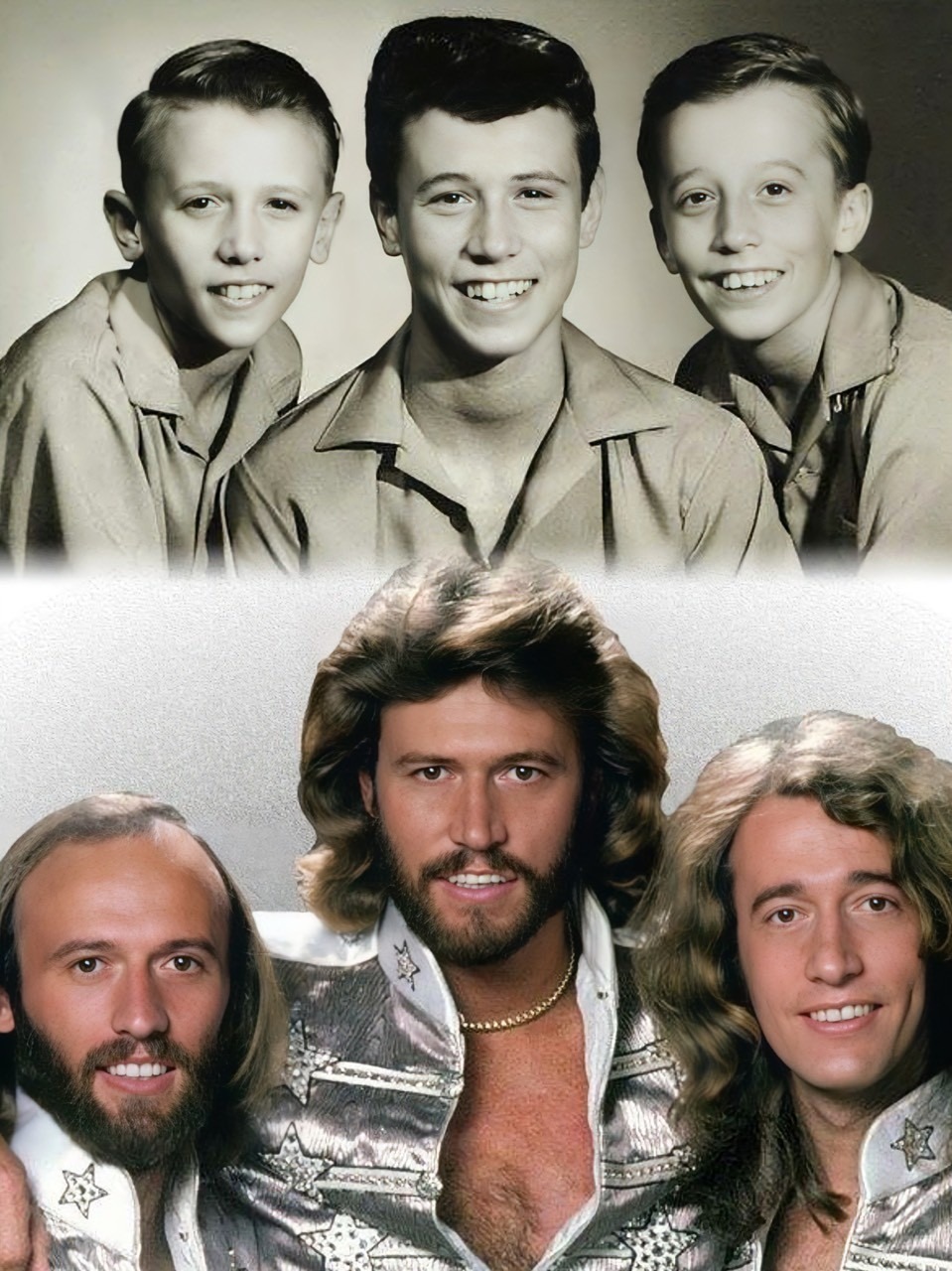
Few musical groups have reinvented themselves as dramatically and successfully as the Bee Gees. Spanning over five decades, their journey from a trio of young brothers in Queensland, Australia, to global icons of music is nothing short of extraordinary. Their story is one of passion, resilience, transformation, and an unyielding commitment to their craft.
Originating in the late 1950s, brothers Barry, Robin, and Maurice Gibb began singing together as children. Their early days under names like The Rattlesnakes and Wee Johnny Hayes and the Bluecats saw them develop harmonies on local Australian radio and talent shows. It wasn’t until the late 1960s that the Bee Gees rose to international prominence with haunting hits such as “New York Mining Disaster 1941” and “To Love Somebody,” music that blended soulful vocals with poetic lyricism.
As they surged in popularity during the late 1960s and early 1970s, they became one of the leading pop acts with songs like “Massachusetts,” “I Started a Joke,” and “Words.” Their rich three-part harmonies set them apart in a psychedelic era. However, internal conflicts and changing musical tastes led to a temporary split before they reunited stronger than ever.
The mid-1970s struck gold with their daring reinvention into disco, an era that the Bee Gees would come to define. After collaborating with producer Arif Mardin on “Main Course,” they unveiled a punchier R&B-inspired sound with hits like “Jive Talkin’” and “Nights on Broadway.” But it was their soundtrack for the movie “Saturday Night Fever” that catapulted them into unprecedented superstardom. With timeless anthems such as “Stayin’ Alive,” “How Deep Is Your Love,” and “Night Fever,” the Bee Gees became the very face of disco, selling over 40 million copies worldwide.
“They weren’t just making music; they were capturing the heartbeat of a generation,” said music historian Dr. Evelyn Marks.
Yet, as disco’s popularity crashed in the early 1980s, the Bee Gees faced a harsh backlash in the U.S. But rather than fade away, they reinvented themselves once more, this time as prolific songwriters and producers for others. Hits like “Islands in the Stream” for Kenny Rogers & Dolly Parton, “Chain Reaction” for Diana Ross, and “Heartbreaker” for Dionne Warwick solidified their reputation as musical geniuses behind the scenes.
“Writing for other artists was their way of surviving the storm,” reflected longtime family friend and music critic Andrew Ellison.
The 1990s and 2000s saw the brothers return to performing together with albums such as “One,” “Still Waters,” and “This Is Where I Came In.” Their induction into the Rock and Roll Hall of Fame in 1997 confirmed their lasting impact. This period, however, was marred by tragedy—the deaths of their younger brother Andy Gibb in 1988 and Maurice Gibb in 2003 profoundly affected the group, yet their music continued to resonate globally.
Following Robin Gibb’s death in 2012, Barry Gibb stood as the last surviving brother, preserving their legacy on solo tours and tribute shows. The 2016 Grammy Salute to the Bee Gees gathered artists from across genres to celebrate 40 years of “Saturday Night Fever,” a testament to the brothers’ unmatched influence on music history.
Throughout decades, the Bee Gees created more than 1,000 songs spanning heartfelt ballads to electrifying disco anthems. Their ability to adapt while preserving their unmistakable harmony is a remarkable narrative of brotherhood and musical evolution. Their voices may have grown silent, but their songs remain immortal, inspiring generations that follow.
